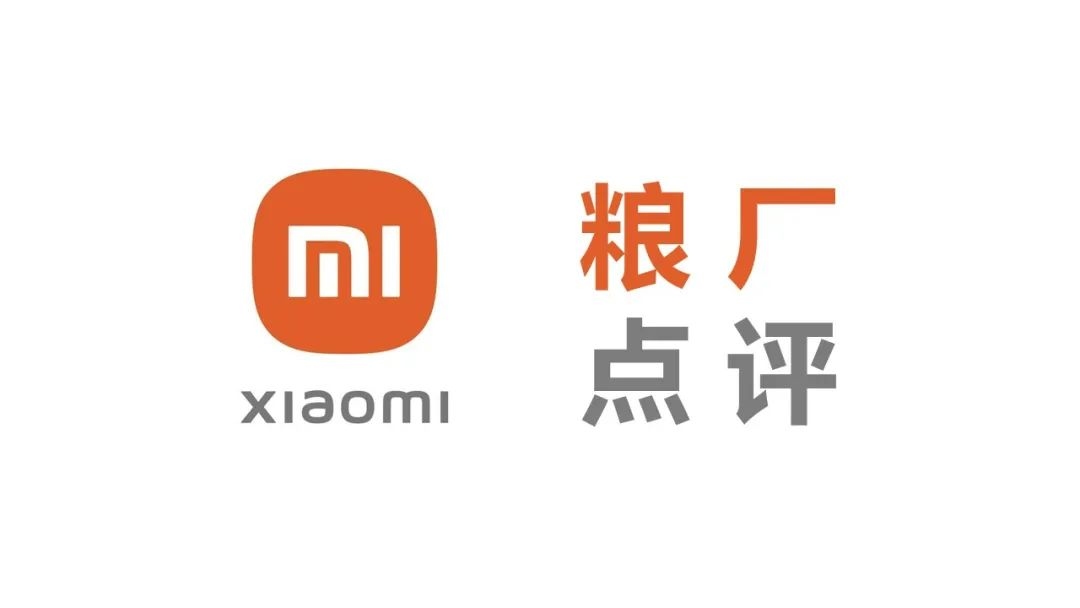
The “Grain Factory Review” channel is dedicated to commenting on the grain factory’s quarterly financial reports, product launches, market performance or other major events. It does not pursue the immediacy and efficiency of information, and mainly provides readers with the opinions of the grain factory researchers.
$Xiaomi Group-W(01810)$ [Full text 7333 words, it takes about 10 minutes to read]
After a preliminary analysis of the somewhat dull Q3 financial report last week, I found that Xiaomi’s car manufacturing was one of the few business highlights in this quarter , but looking at previous issues of “Grain Factory Review”, there is no in-depth car issue yet. related analysis.
There are two reasons: First, I have no background in automotive technology , so it is difficult to conduct technical analysis and forecasts on autonomous driving, battery solutions, and smart cockpits that everyone is interested in; There are too many valuable conclusions logically deduced.
However, so far, it has been 20 months since Xiaomi Group officially announced the production of the car , and it has also released an important milestone such as the first engineering car off the assembly line. At the same time, many channels have also released more public information to help us restore the true outline of Xiaomi’s car as much as possible.
Therefore, I have selected the following 6 issues that everyone is most concerned about, and tried to analyze and forecast. Due to the length of the article, the core conclusions are briefly summarized for your direct reference:
1. What is the background and reasons for Xiaomi’s car-making: Xiaomi’s car-making is Lei Jun’s biggest follow-up (1) the fuse of the “military list” of the United States; (2) the stock of smartphones in the Red Sea market; (3) smart electric vehicles (4) The capital market favors new hardware companies.
2. What is the latest progress of Xiaomi’s car manufacturing: (1) The first engineering vehicle has been rolled off the assembly line on September 28, 2022; (2) Xiaomi Beijing Automobile Factory is expected to be completed within this year; (3) Shanghai headquarters is responsible for vehicle hardware and software , Beijing headquarters is responsible for cockpit, autonomous driving and factory mass production.
3. What is the time point forecast for the follow-up road test, license plate, release, and mass production: (1) The off-line construction vehicle can meet the road test time requirements of “two cold and two heat”; (2) EV license approval is expected to have no substantial obstacles , the acquisition of BAIC is unlikely; (3) the first car launch may be the annual speech in August 2023; (4) the first car mass production time is the first half of 2024.
4. What are the positioning and related information of Xiaomi’s first model: (1) The first Xiaomi car is a sedan, and the second is an SUV, which is expected to be released in 24 years and mass-produced in 25 years; (2) The size of the first car is comparable to BMW 5 Series and BYD Han; (3) The positioning of the first car product is the benchmark high-end car.
5. What is the pricing range of Xiaomi’s first car: The market for the first car is expected to be above 300,000, and the actual price may be in the range of 250,000 to 300,000 (low and high-end versions).
6. What are the advantages of Xiaomi’s car manufacturing: (1) the advantages of the brand out of the circle; (2) the combination of software and hardware; (3) the AIoT ecosystem; (4) the home of Xiaomi and overseas markets; (5) strong Financial strength; (6) Lei Jun, Lei Jun or Lei Jun.
Again, as usual, I do not intend to write a similar story in the financial media, but only objectively analyze and predict Xiaomi’s car manufacturing based on public information.
The following is the text.
1. What is the background and reason for Xiaomi to build a car?
Xiaomi Group officially announced that the car was built on March 30, 2021. In the noisy environment at that time, it seemed that Xiaomi’s car manufacturing was mainly due to the “military list ban” in the United States. But looking back at today’s time, I prefer to define Xiaomi’s car-making as Lei Jun’s biggest “follow the trend” , specifically for the following four reasons:
(i) U.S. “Military List” Ban Fuse
The US “military list” ban in January 2021 is undoubtedly the most important fuse to help Lei Jun decide to build a car. In an interview with CCTV’s “Genting Talk” in September this year, Lei Jun mentioned that Xiaomi Group was included in the “military list” by the United States on January 14, and then immediately launched a research on car manufacturing on January 15 . The high coincidence of the two time points has shown that the US sanctions have a great impact on Xiaomi Group.
In fact, the bigger background at that time was that Huawei was added to the “entity list” by the United States and repeatedly sanctioned for four rounds, directly withdrawing from the global smartphone market . After Xiaomi Group was added to the “military list”, it is natural to worry that the sanctions will be further escalated, from restricting Xiaomi Group’s securities trading to further restricting Xiaomi’s smartphone business. Therefore, in the face of huge uncertainty, how to find a relatively certain way out, smart electric vehicles are the choice to follow the trend.
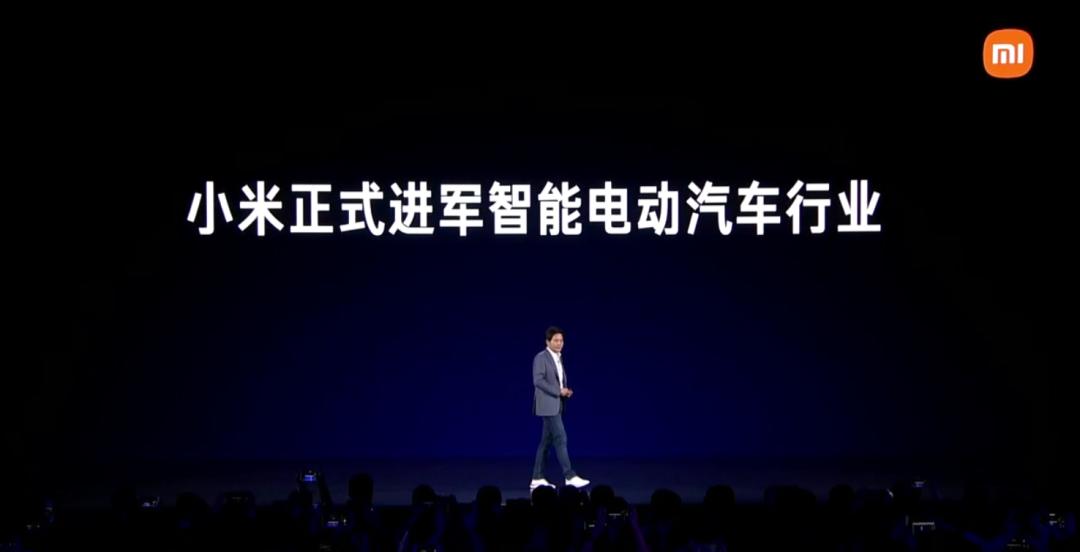
(ii) Smartphones enter the stock Red Sea market
The smartphone industry bid farewell to the era of high growth, and it is an objective fact that Xiaomi needs to find a second growth curve urgently. According to the latest report released by Counterpoint, the global smartphone shipments in Q3 2022 barely exceeded 300 million, which is the worst Q3 shipment data since 2014 . Even without considering temporary factors such as the new crown epidemic, inflation and geopolitical crisis, the consensus of the smartphone industry is that it is difficult to return to the era of high growth. Even if Xiaomi reaches the top of the smartphone industry, the shipment ceiling can already be seen, namely At present, Samsung’s annual range of 300-350 million units.
This is a retrospective point of view, because after Xiaomi announced the manufacture of the car in March 2021, it won the lawsuit against the US Department of Defense in May. At that time, Xiaomi still hoped that through high-end and offline strategies, as much as possible Gain market share ceded by Huawei. From today’s point of view, Xiaomi is difficult to say whether it is a high-end or offline success, and the macro environment has made these two goals more difficult . The smartphone business has also experienced a year-on-year decline in shipments and revenue for three consecutive quarters. In this context, the second curve of smart electric vehicles seems to follow the trend for the continuation of Xiaomi’s future growth story.
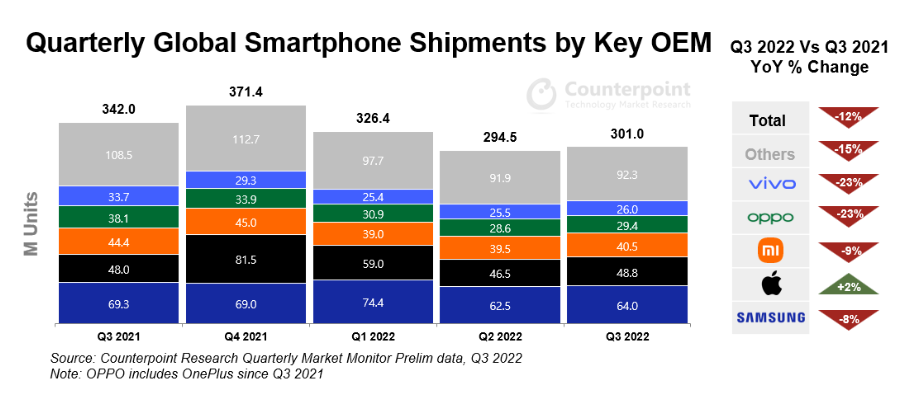
(iii) Consumer electronics of smart electric vehicles
As I mentioned in my previous article, the best description of the new energy vehicle outlet is this: ” There has never been such a commercialization opportunity in human history, and it occupies the commanding heights of the information industry and energy industry at the same time .” So any capable entrepreneur will want to get a ticket. Lei Jun also mentioned in the “Genting Talk” interview that after investigating the smart electric vehicle industry in 2021, the conclusion is that it has to be done .
The fundamental reason for having to do it is that Lei Jun has mentioned the consumer electronics of smart electric vehicles many times in public, including the Xiaomi Investor Day speech in November 2021 and Twitter in October 2022. Lei Jun believes that the BOM of EVs currently accounts for more than 50% of the electronic components of the vehicle. Compared with gasoline vehicles, the manufacturing threshold for electric vehicles is greatly reduced: 30.000 components are highly modular, and the cost of batteries has dropped by 80% in the past ten years ( There is at least 50% room for cost reduction in the future). In the future, EV will be a form of consumer electronics with intelligence, software and user experience as the core.
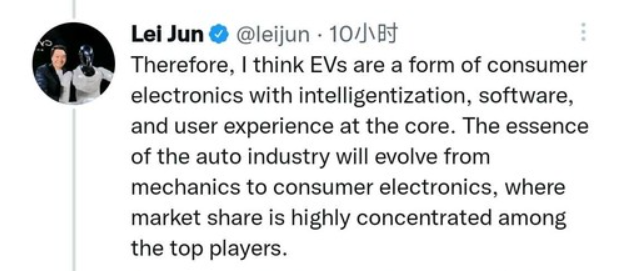
In my opinion, the best evidence of EV consumer electronics lies in the two-way flow of smartphone makers and smart car makers . Almost the top smartphone manufacturers are deploying EVs, such as Apple, Huawei and Xiaomi. At the same time, the best smart car manufacturers are also coveting smartphones, such as Geely’s acquisition of Meizu and NIO’s announcement of self-developed smartphones. On the one hand, it illustrates the consumer electronics of EVs, and on the other hand, it also reflects the necessity of Xiaomi to build a car. If Lei Jun did not “follow the trend” into the EV industry, it is very likely that he would miss the next battlefield after smartphones.
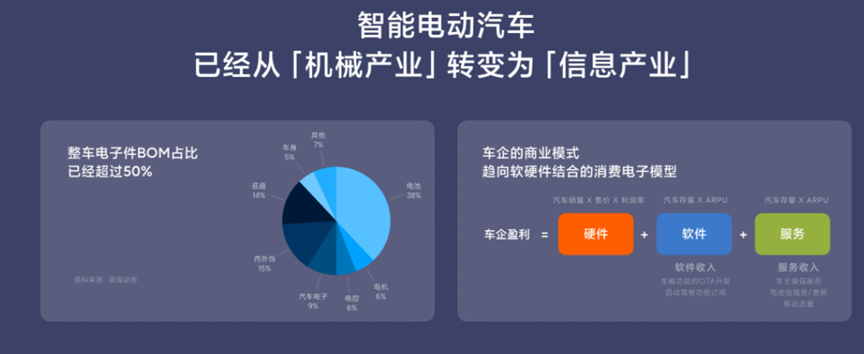
(iv) Capital market favors new hardware companies
The last reason is that the underlying logic of the Internet industry is undergoing earth-shaking changes, and the capital market has begun to give more favor to new hardware companies . In the past two years, Tesla, BYD, and the new forces of domestic electric vehicles have all been enough. explain the problem. An interesting phenomenon I have observed is that in the latest research report (November 1) of the investment bank Credit Suisse covering Xiaomi Group, its segment valuation method (SOTP) has given hardware profits 16.2 times PE, while the Internet profit is only 12.1 times . In such an environment of Internet reshuffling and the rise of intelligent manufacturing, Xiaomi chose to enter the EV track, which is also an opportunity for angel investor Lei Jun.

2. What is the latest progress of Xiaomi’s car manufacturing?
On the whole, the Xiaomi car project is very smooth, and the construction vehicle and Beijing factory have made significant progress.
First of all, the most important progress of Xiaomi Auto Q3 is that the first engineering vehicle officially rolled off the production line in Shanghai on September 28. The video of Lei Jun’s speech at the vehicle software department of the Shanghai headquarters confirmed the matter, and mentioned that the overall progress of Yu Liguo’s evaluation was very smooth;
Secondly, Xiaomi’s Beijing auto factory is in full swing and is expected to be completed before the end of 22 . In April this year, Xiaomi Group won the YZ00-0606-0101 plot in Yizhuang New Town, Beijing Economic Development Zone with a reserve price of 610 million yuan. The auto factory is under construction. Previously, there was an Up master at station B who regularly went to the site to update the progress of the factory, but it was later stopped by Xiaomi, which was also in line with the aforementioned low-key attitude of Xiaomi.
In addition, many friends noticed that the offline location of Xiaomi’s first project was Shanghai, not Beijing. In fact, the division of labor between Shanghai and Beijing in Xiaomi’s car manufacturing is relatively clear. Judging from the recruitment positions circulating in the market, Shanghai is responsible for vehicle hardware and software, and Beijing is responsible for cockpit, autonomous driving and factory mass production; it can also be understood that Shanghai is a “traditional car-making force”, while Beijing is a “new car-making force” (including the Internet). Of course, friends who are familiar with the Internet and automobile industries can easily find that this is also a reasonable arrangement based on the industrial clusters and resource distribution of the two cities.
3. What is the forecast for the follow-up road test, license plate, release, and mass production?
At present, the progress of construction vehicles and factories is relatively clear, and the follow-up market can expect four important nodes such as road test, license plate, release and mass production:
(i) Off-line construction vehicles can meet the road test requirements of “two colds and two summers” :
The regular vehicle test cycle includes two colds and two summers (that is, two summers and two winters). The smooth rollout of the Xiaomi engineering vehicle in September this year is enough to catch up with this year’s winter test and basically meet the 24-year mass production timeline. , It is expected to see the road test spy photos of Xiaomi cars in the next few months.
(ii) EV license approval is not expected to have substantial obstacles :
Bloomberg pointed out in July this year that Xiaomi’s car-making has encountered regulatory hurdles in EV licenses, causing some doubts in the market. The logic of Bloomberg’s report is that China already has a lot of EV licenses, and regulators will tighten the issuance of new EV licenses and encourage mergers and acquisitions of existing licenses and factories. As a result, there are many rumors that Xiaomi will acquire BAIC’s factories and licenses to complete the acquisition of relevant qualifications .
My point of view is that there will be a game between the regulatory level and Xiaomi, but it is impossible to stop Xiaomi from making cars. Different from Didi’s listing, Xiaomi’s car manufacturing is a high-profile fight against the backdrop of the US military list sanctions in 2021. The choice of Beijing and Shanghai is also inseparable from the government’s vigorous efforts at that time (if you understand what I mean, you can reply ![]() ). Therefore, the landing of Xiaomi’s car is only a matter of posture. There will be games in the process, but there will be no substantial obstacles. The issue of license plates should see substantial progress in the next few months, and it will be Q1 or Q2 in 2023 at the latest .
). Therefore, the landing of Xiaomi’s car is only a matter of posture. There will be games in the process, but there will be no substantial obstacles. The issue of license plates should see substantial progress in the next few months, and it will be Q1 or Q2 in 2023 at the latest .
As for the acquisition of the BAIC plant, my view is that it is unlikely . Since Xiaomi confirmed that it built its own factory, the value of BAIC has become tasteless. In addition to the value of the license, the organizational model, personnel structure and low-efficiency operation of traditional state-owned enterprises are unacceptable to Xiaomi; and it is impossible for BAIC to agree to sell only the key Equipment, transfer core technical personnel. Therefore, there is a natural contradiction between Xiaomi and BAIC. Of course, according to Lei Jun’s personality, Xiaomi will still seriously negotiate, conduct due diligence and analyze, just like when he went to investigate Evergrande before.
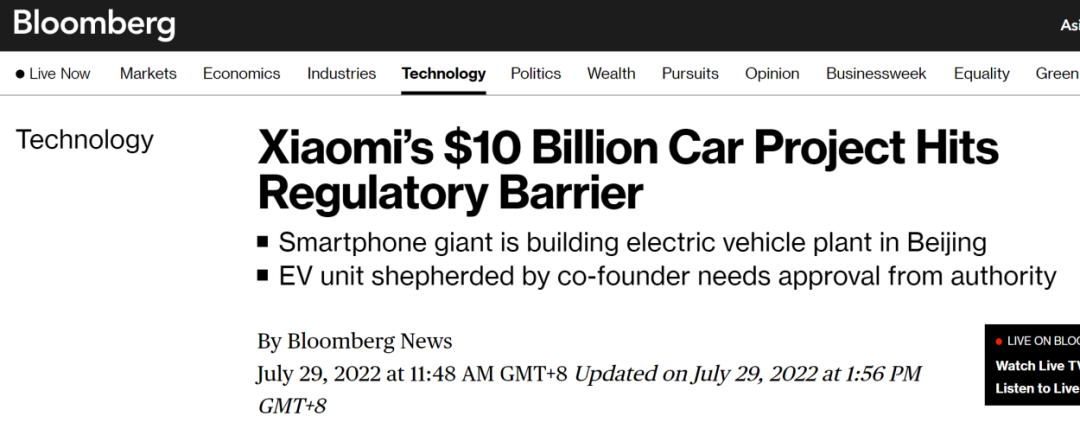
(iii) The car launch is likely to be the August 2023 annual presentation :
The third time node is the car launch link that everyone is paying attention to. My guess is that if the road test, factory and license plate all go well, the most likely point of release for the car is Lei Jun’s annual speech in August 2023 . According to the experience of the past three years, the annual speech in August is the most important external event of Xiaomi Group throughout the year . Lei Jun will give a speech throughout the whole process, sharing personal experience, announcing company strategy and releasing flagship products.
(iv) The time for mass production of vehicles is determined in the first half of 2024:
In comparison, there is no suspense about the time point of the first mass production (Start of Production, SOP). Xiaomi itself has repeatedly confirmed that the time point for overproduction is the first half of 2024, which is similar to the road tests and factories analyzed in the previous article. , The overall schedule of the conference is also consistent.
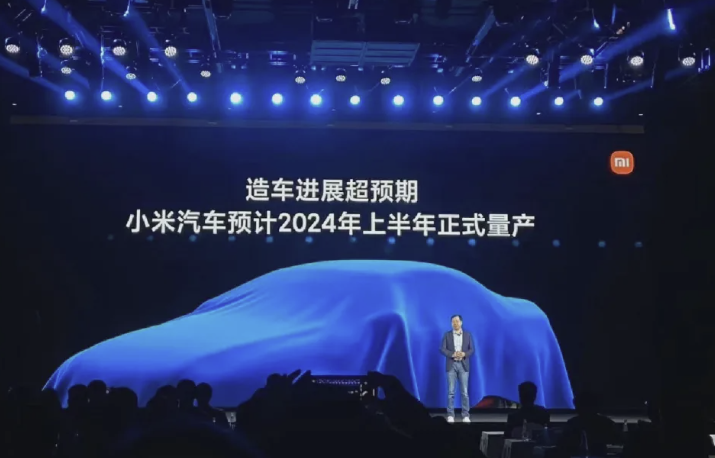
4. What are the positioning and related information of Xiaomi’s first model?
(i) From the perspective of model planning , it has been confirmed that the first Xiaomi car is a sedan ; of course, Lei Jun also mentioned in the live broadcast of the announcement that the first car will be determined from the sedan and SUV, so I guess the second The model is an SUV. If you guess at the same time schedule, it may be released in 2024 and mass-produced in 25 years.
(ii) In terms of size, in the autonomous driving video released at the annual speech in August this year, Xiaomi chose the BMW 5 Series and BYD Han as test vehicles for modification. According to my communication with people in the industry, the size of the Xiaomi car should be similar, so the size should be the same as the BMW 5 Series and BYD Han .
(iii) From the perspective of positioning , the first Xiaomi car has chosen to be the benchmark high-end car . To correct my previous point of view on this point, the best proof that Xiaomi’s first model is a high-end car is the air suspension photo posted on Weibo on October 19 , which is a symbol of high-end cars in the traditional automobile field.
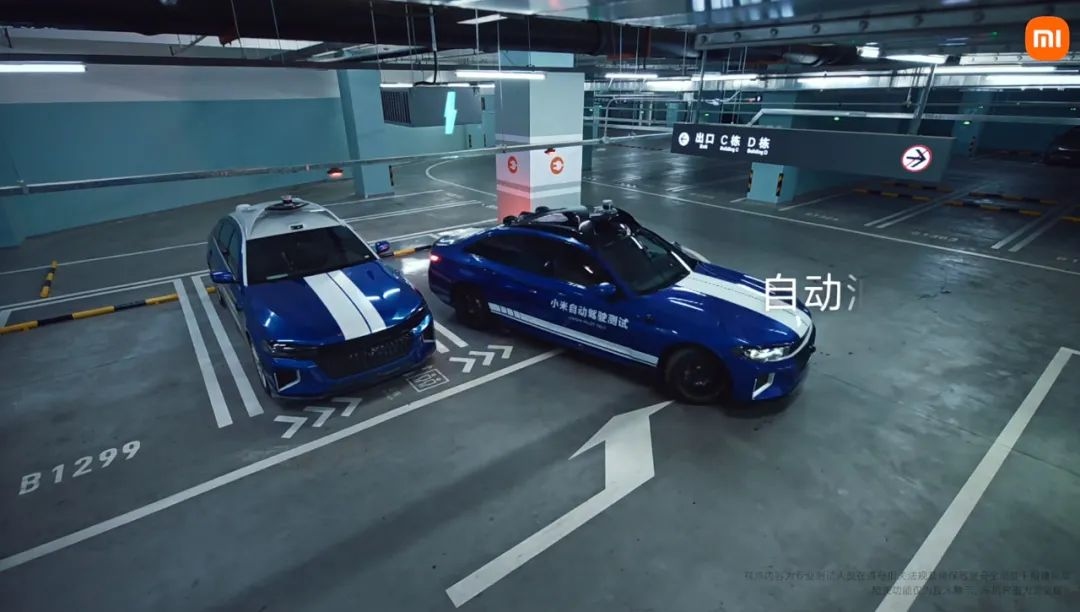
5. What is the pricing range of Xiaomi’s first car?
My personal guess is that the price of Xiaomi’s first car is in the range of 250,000-300,000 .
Based on the above positioning assumptions for benchmarking high-end cars, Xiaomi’s first sedan should be a high-end car of 500,000-600,000 yuan, which is in line with market rumors that the price of Xiaomi’s first car exceeds 300,000 yuan .
However, it should be noted that Lei Jun said in the “Explosive Strategy” in the new book “Xiaomi Entrepreneurship Thinking” released this year that exceeding expectations is the most important link. Therefore, my personal view is that Xiaomi’s car manufacturing will maintain market expectations above 300,000, and the actual price will definitely exceed expectations: for example, the low allocation is in the range of 250,000, and the high allocation is in the range of 300,000.
In my opinion, the first car benchmarking high-end reflects Lei Jun’s lesson in the smartphone industry that it is too difficult to move from low-end to high-end. From the traditional way of playing, Xiaomi’s choice should be to first create a bucket product to meet 80% of the needs of 80% of users, and then try high-end and segmented markets after gaining a certain market share. But it turns out that once a low-end impression is formed on users, it is very difficult to shape a high-end brand tonality . Similar to Apple, Tesla and Weilai, they first established a high-end market before trying low-end product lines. Therefore, this time, Lei Jun chose the first car to benchmark the high-end, hoping to first prove to users that Xiaomi can make a good car, and then it is only a matter of time before the low-end market is rolled out through efficiency .
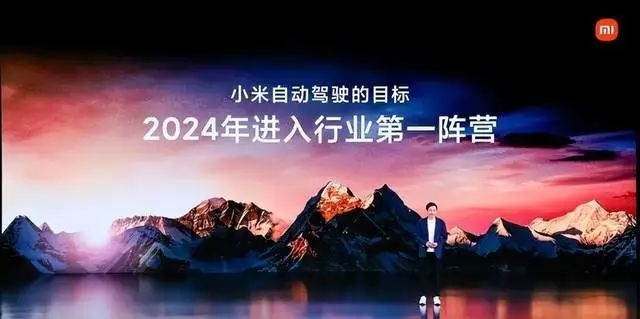
6. What are the advantages of Xiaomi’s car manufacturing?
In fact, there have been many reports and analyses discussing the advantages of Xiaomi’s car-making. I will also systematically discuss my views here:
(i) The advantages of Xiaomi brand out of the circle
In my opinion, Xiaomi’s brand advantage not only comes from the existing brand base and extensive rice noodles, but more importantly, the brand is out of the circle. Xiaomi is not only a mobile phone manufacturer in the hearts of the majority of Mi fans, but a consumer electronics company with many IoT ecosystems. Therefore, compared with Geely’s smartphones, Xiaomi’s entry into the EV track will make it easier for consumers to accept it.
Afaqs, a professional media analysis website in India, once had an article analyzing the value of Xiaomi’s brand out of the circle: “Will people recognize the shoes produced by Xiaomi? ”, the article believes that Xiaomi Group continuously enhances its brand value through fans, communities and networks, and does not define itself as a single category brand, but represents the entire consumer electronics lifestyle .
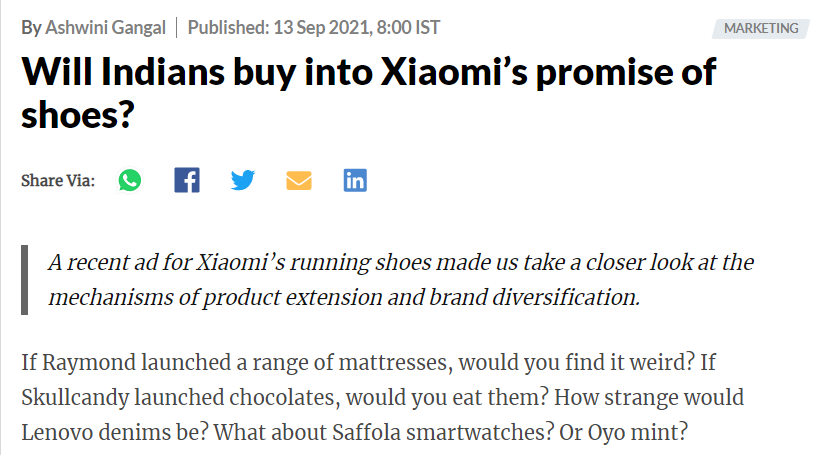
(ii) Xiaomi’s ability to combine software and hardware
Regarding the ability of software & hardware integration , I have often mentioned it in recent articles. I propose that the threshold for hardware is higher than most people think; and the threshold for combining software and hardware may not be what most people can imagine. In the future consumer electronics industry, the ability to “combine software and hardware” is one of the core competitiveness . Based on the previous assumptions about the trend of EV consumer electronics, Xiaomi’s long-term “soft and hard integration” experience in the smartphone and IoT ecosystem can help Xiaomi gain more advantages in the EV industry .
From the hardware side , as I have analyzed in previous articles, Xiaomi’s current understanding of supply chain and hardware manufacturing is mature enough, and it no longer thinks that hardware is just simple stacking and assembly. These experiences are all based on real money. What comes out is enough to help Xiaomi avoid many detours in EV manufacturing . Secondly, the supply chains of smartphones and EVs overlap to a large extent. Xiaomi can completely expand the existing supply chain system from mobile phones to EVs, and gain cost advantages through scale . Finally, Xiaomi’s industrial investment department has a very extensive layout in the supply chain, especially the newly raised 10 billion yuan: “Xiaomi Smart Manufacturing Investment Fund” is dedicated to the EV track, and the investment amount in the core track such as chips and sensors for autonomous driving has already more than 2 billion yuan .
From the software side, in addition to naturally imagining Xiaomi’s software advantages in smart cockpits (especially car machines) and autonomous driving, Xiaomi actually has Internet infrastructure and Internet monetization methods that hardware companies do not have . Internet infrastructure is the ABC (i.e. AI, Big Data and Cloud) that I have always emphasized; and among the existing monetization methods of the Internet, I think the most important thing for EV is Internet finance, car loan, car insurance and leasing and other consumer payment scenarios. The landing can give full play to Xiaomi’s Fintech advantages and help Xiaomi realize profits beyond EV hardware .
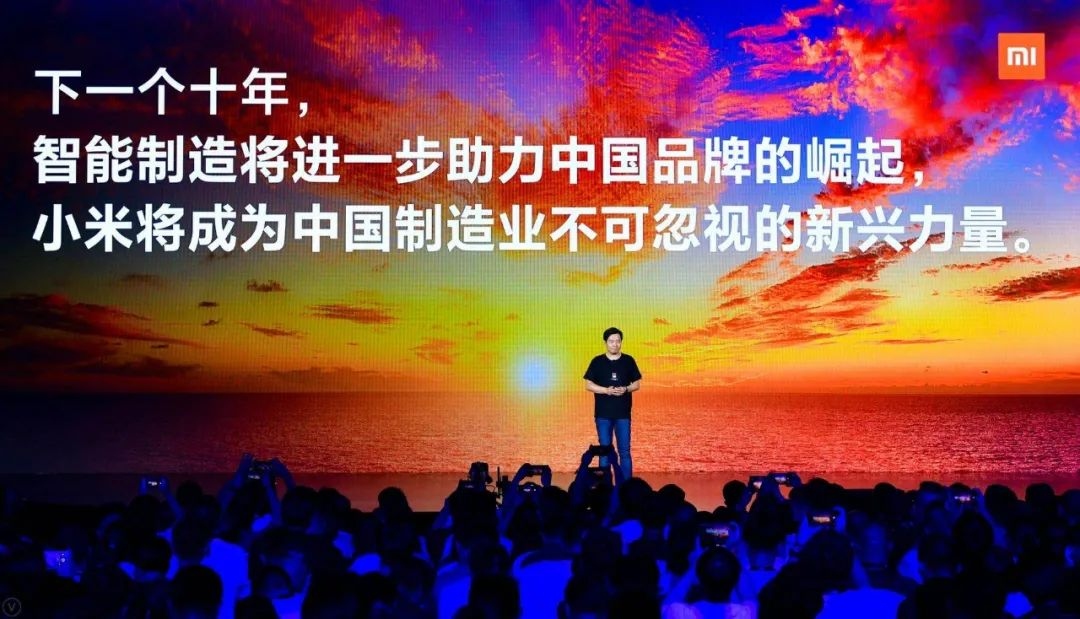
(iii) Xiaomi’s AIoT ecosystem:
Xiaomi Group mentioned in its automobile-related promotional materials that its unique “mobile phone-home-car” ecological smart life will bring Xiaomi a competitive advantage in the EV track.
First of all, Xiaomi Group is in an absolute leading position in the AIoT industry, which is not possessed by all current EV players . As of Q2 2022, Xiaomi’s IoT ecosystem has connected more than 526 million IoT devices, 70.8 million Mijia App users, and more than 10 million super core users with more than 5 IoT products. Secondly, if EV is also used as a part of the IoT ecosystem, then it will be completely connected with Xiaomi’s previous core strategy . From an ecological point of view, the synergy between EVs and mobile phones, wearable devices, and smart home products is limitless.
Of course, there are also many friends who are entangled in the future profit and monetization model of EV in the IoT ecosystem. From the perspective of IoT ecology, my point of view is still the same, that is, Xiaomi is the key to open the door of IoT, and controlling the ecological entrance and deploying ecological products is the most important thing at present; when the wind comes, all the monetization models are It’s a matter of course.

(iv) Xiaomi Home and overseas markets :
Xiaomi Home and more than 100 overseas markets will become natural channels for Xiaomi car sales. In 2021, under the leadership of Lu Weibing, Xiaomi started a new round of offline exploration, proposed a complete set of offline store models based on “efficiency”, and quickly opened 10,000 stores. Although the offline business in China has not been as smooth as expected due to the new crown epidemic, weak demand and product mix issues, from my perspective, I think this is still the right direction to work towards. According to my information, many of the newly opened Xiaomi homes have been designed with Xiaomi cars in mind , and after the cars are released, they can be quickly sold across the country . In addition, Xiaomi’s advance layout in more than 100 countries and regions around the world has also laid the foundation for Xiaomi’s car to go overseas in the future. These are all unmatched by the new car-making forces.
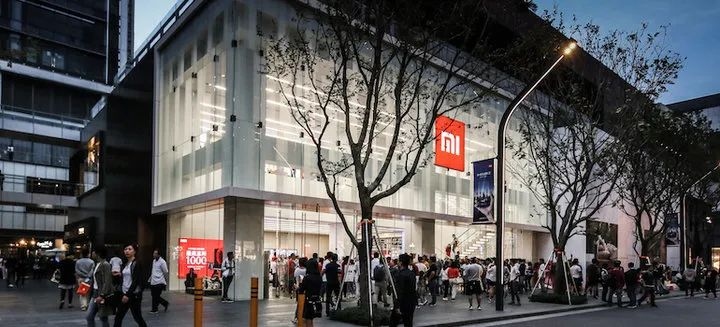
(v) Xiaomi’s capital reserve strength :
A very important advantage of Xiaomi’s car manufacturing lies in its capital reserve strength. Lei Jun mentioned in his 2021 car-building speech that he will invest 10 billion US dollars in 10 years; in his annual speech in August this year, he mentioned that the autonomous driving team has more than 500 people, and related investments are planned in the initial stage. More than 3.3 billion yuan, these all reflect Xiaomi’s “money capability” . Xiaomi’s capital reserves come from the business accumulation in the past 11 years, from the green bonds issued in the global capital market, and the feedback from the three traditional businesses.
But what I want to analyze is that strong financial strength is not simply the difference between “buy, buy, buy”, but more importantly, in strategic choices . For start-ups, survival is always the first topic, followed by how to live well; and for players like Xiaomi, if they enter the EV first camp, they are thinking about the first day of building a car . Therefore, when faced with the dilemma of self-built factories and foundry, most of the new forces chose foundry, while Xiaomi insisted on choosing self-built factories, and did not hesitate to place an order for the world’s largest integrated die-casting equipment of 8,800 tons. .
More importantly, sufficient funds can ensure that Xiaomi’s car manufacturing will not be coerced by external funds . Because external capital is always short-sighted and seeks certainty, Xiaomi’s IPO process is a typical result of being coerced by external capital. Therefore, if Lei Jun wants to adhere to long-termism and delayed gratification in car building, he must stay away from external capital in order to keep his actions intact . Understanding this, you can understand why Lei Jun emphasized that “wholly-owned car manufacturing” must be made at the beginning of the announcement.
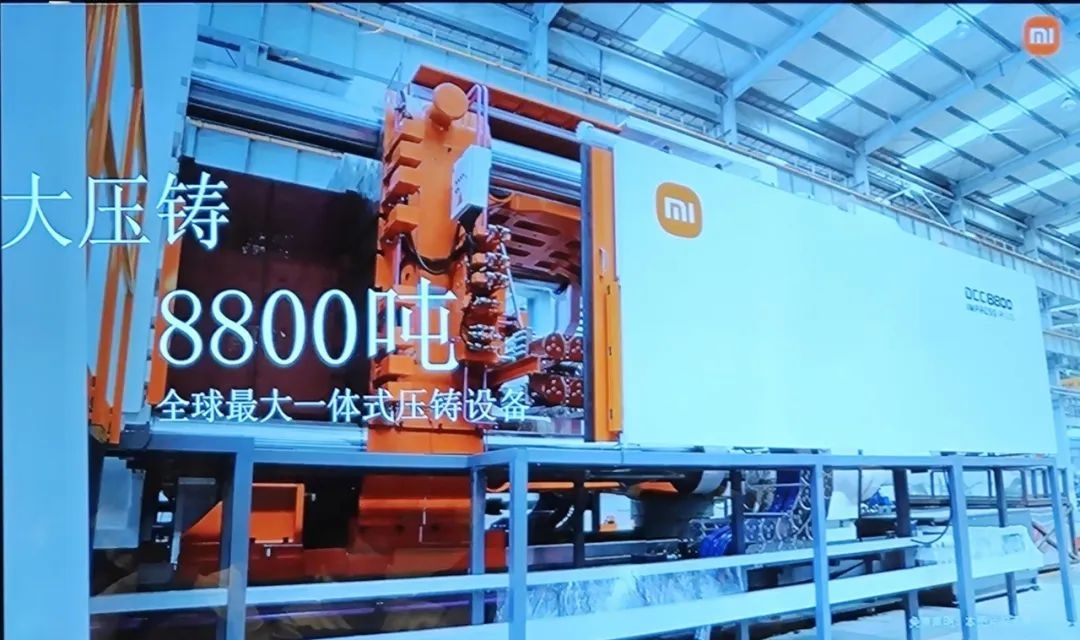
(vi) Lei Jun, Lei Jun or Lei Jun :
Any topic of Xiaomi is destined to focus on Lei Jun at the end of the discussion . Whether it is Xiaomi’s high-end strategy, efficiency gene, or execution ability, it is essentially the embodiment of Lei Jun’s personal will. I believe that every Xiaomi investor has deep recognition and trust in Lei Jun.
I wrote in the article on the third anniversary of the listing of Xiaomi Group, combing through Lei Jun’s entrepreneurial experience, I will find that all his battlefields are against world-class companies. In the era of office software, it is Jinshan against Microsoft, in the era of e-commerce, it is excellent against Amazon, in the era of instant messaging, it is Michat against WeChat, and in the era of mobile Internet, it is a mobile phone against Apple.
Now entering the smart electric vehicle market, the opponent has added Tesla. Lei Jun’s yearning for finality thinking is a strong sense of participation in the world, eager to change the world, and eager to use space to defeat time.
Many people mocked Lei Jun for being like the mythical Sisyphus, constantly pushing the boulder to the top of the steep mountain, only to watch the boulder roll back to the foot of the mountain and start all over again. But in my opinion, this is Lei Jun’s most powerful resistance to this meaningless world. Although he knew that he could not draw a perfect circle, he never stopped moving closer to the circle.
Finally, let’s review the ending of Albert Camus’ The Myth of Sisyphus:
” This is all the silent joy of Sisyphus. His fate is his, his rock is his business… Sisyphus tells us that the highest piety is to deny the gods and remove the stone. He also considers himself to be Happy. This world, which has never been mastered since then, is neither desert nor fertile soil for him. Every grain of this boulder, every ore of this dark mountain, is a world only for Sisyphus. His struggle to climb to the top of the mountain is enough in itself to fill one’s heart. Sisyphus should be considered happy. “
This topic has 24 discussions in Snowball, click to view.
Snowball is an investor’s social network, and smart investors are here.
Click to download Snowball mobile client http://xueqiu.com/xz ]]>
This article is reproduced from: http://xueqiu.com/7970049223/234866314
This site is for inclusion only, and the copyright belongs to the original author.